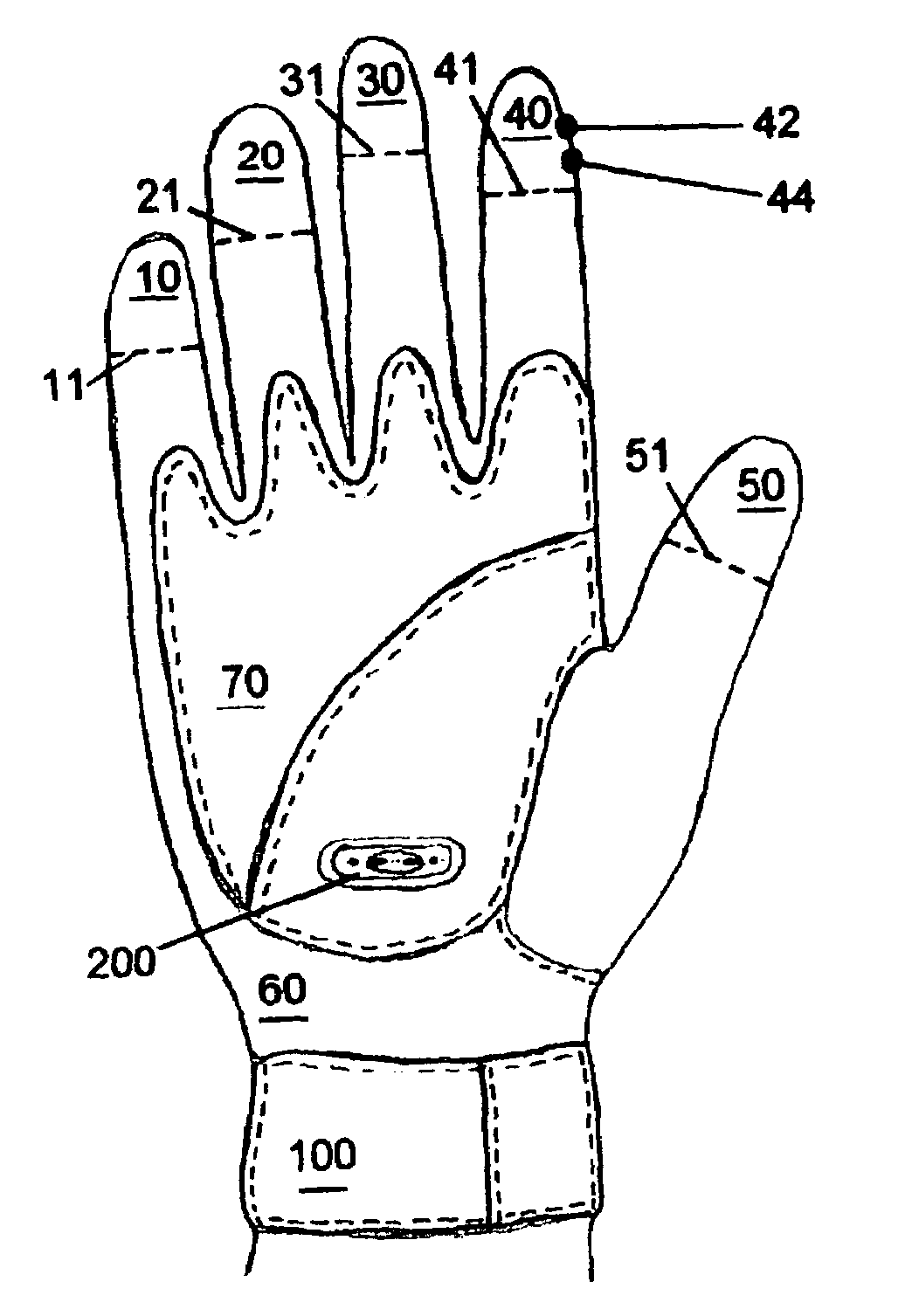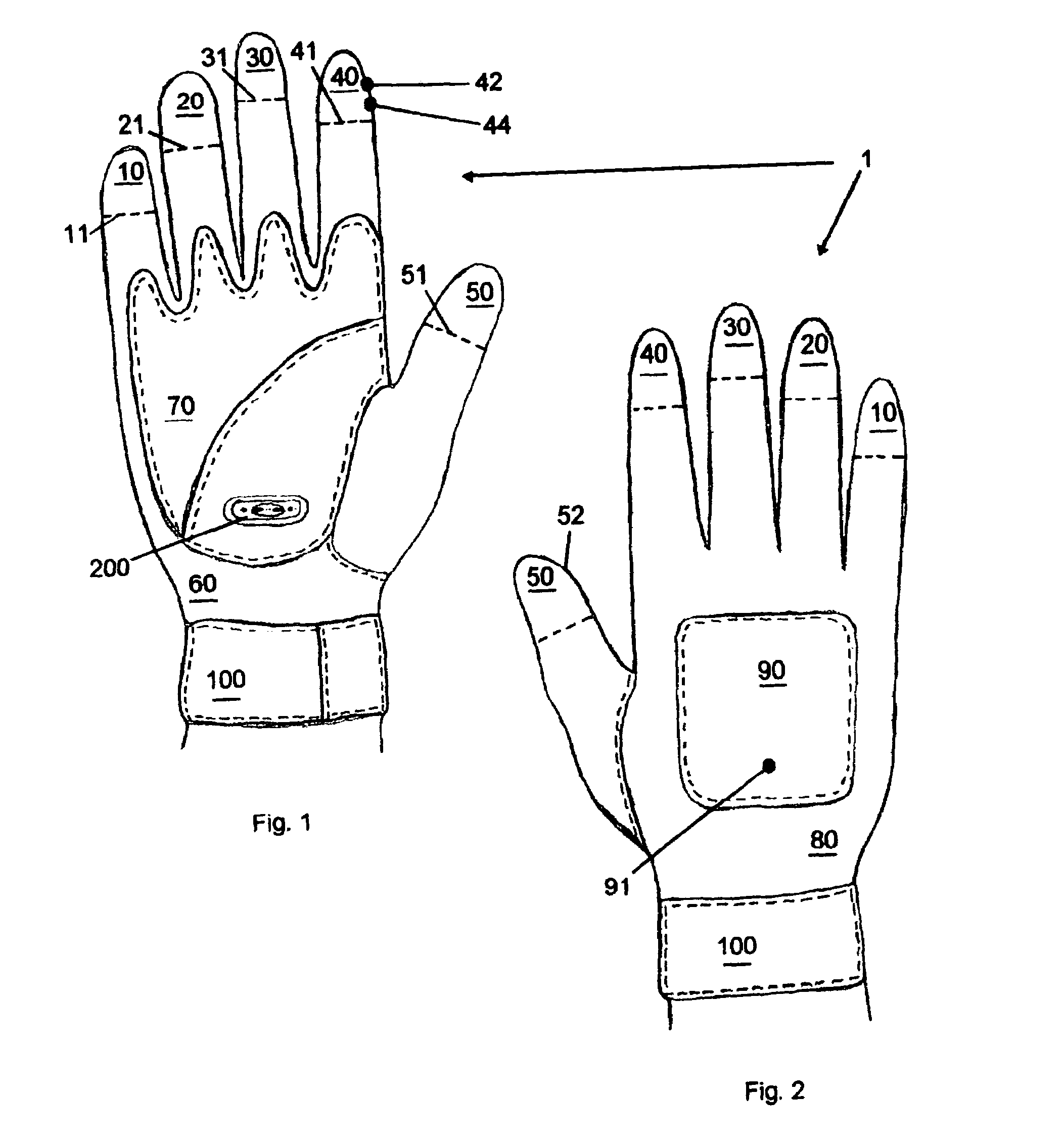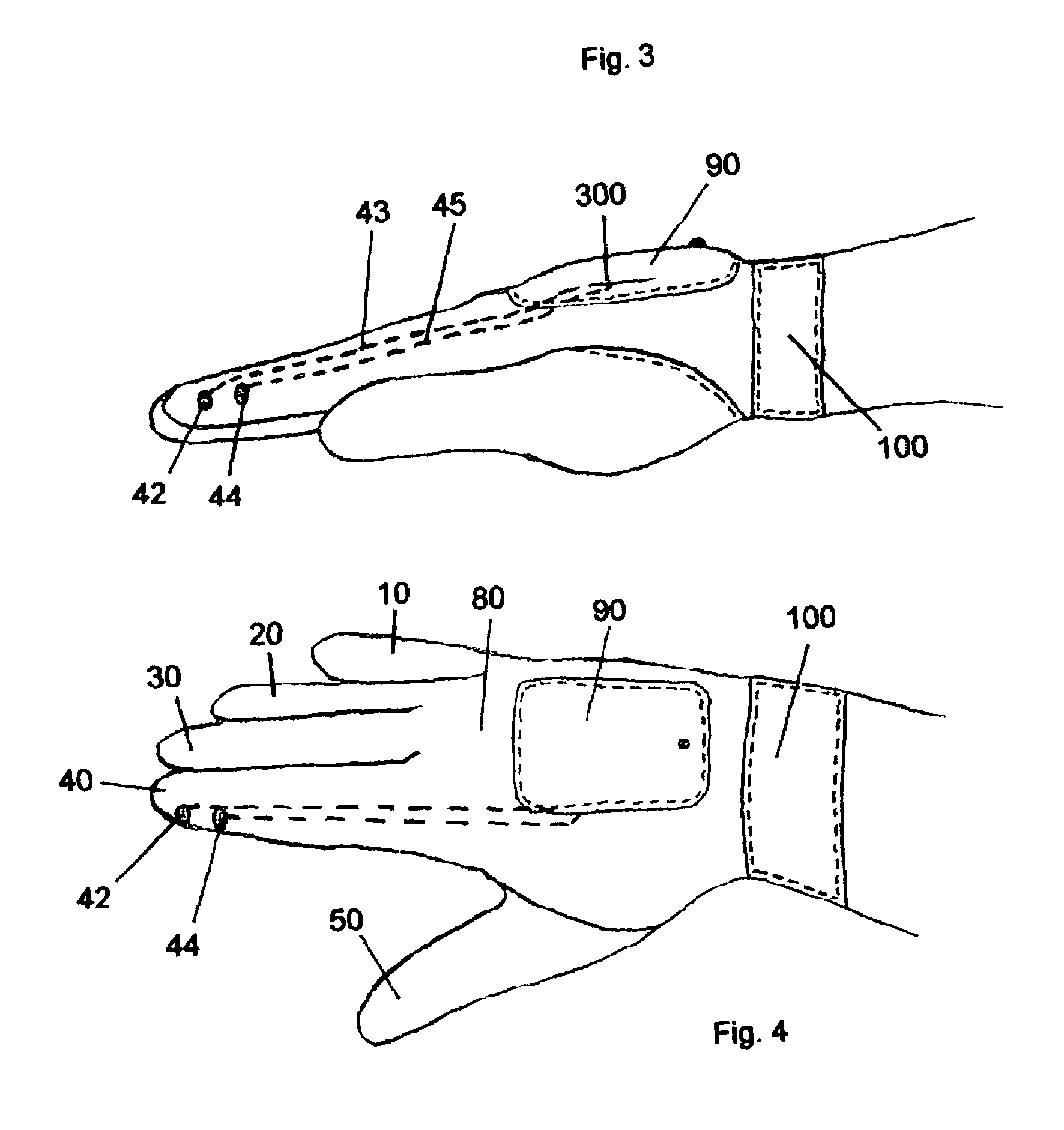Versatile stun glove
a stun glove, a technology of a glove, applied in the field of electric self-defence weapons, can solve the problems of limited versatility constant gripping of the hand-held stun glove, and limited use of the user's fingers and hands, so as to achieve the effect of convenient activation of the glov
- Summary
- Abstract
- Description
- Claims
- Application Information
AI Technical Summary
Benefits of technology
Problems solved by technology
Method used
Image
Examples
Embodiment Construction
[0044]Before explaining the disclosed embodiments of the present invention in detail it is to be understood that the invention is not limited in its application to the details of the particular arrangements shown since the invention is capable of other embodiments. Also, the terminology used herein is for the purpose of description and not of limitation.
[0045]FIG. 1 is a palm side view of a preferred embodiment of the versatile stun glove 1. FIG. 2 is a back side view of the stun glove 1 of FIG. 1. FIG. 3 is a side view of the stun glove 1 of FIGS. 1–2. FIG. 4 is a tilted back side view of the stun glove 1 of the preceding figures. Referring to FIGS. 1–4, the stun glove 1 can be formed from a thin flexible and strong material, such as leather, lycra, and the like, that substantially covers each of five fingers, pinky 10, fourth finger 20, middle finger 30, index finger 40 and thumb 50, palm area 60 and back of hand area 80. A thin almost transparent dome shaped sublayer of insulativ...
PUM
 Login to View More
Login to View More Abstract
Description
Claims
Application Information
 Login to View More
Login to View More - R&D
- Intellectual Property
- Life Sciences
- Materials
- Tech Scout
- Unparalleled Data Quality
- Higher Quality Content
- 60% Fewer Hallucinations
Browse by: Latest US Patents, China's latest patents, Technical Efficacy Thesaurus, Application Domain, Technology Topic, Popular Technical Reports.
© 2025 PatSnap. All rights reserved.Legal|Privacy policy|Modern Slavery Act Transparency Statement|Sitemap|About US| Contact US: help@patsnap.com



